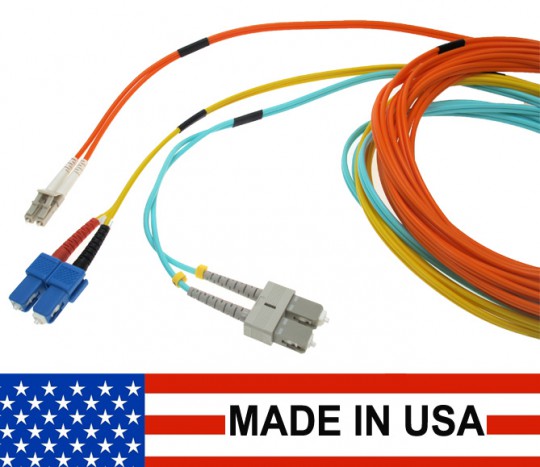Data centers and network support have become an integral part of every business today. The software applications which keep mission-critical operations running in redundant, 24/7 ecosystems, rely on structured cabling systems that are properly engineered which they use to connect the cloud to every user. So, you can say that structured cabling is the main foundation of data centers.
However, structured cabling is not as useful as UPS systems, it plays a vital role in supporting the cloud. But, there is one important component which people easily forget is patch cord, also known as fiber optic patch cord.
Usually, we buy patch cords at the last minute and install them haphazardly. But, you can improve the performance of your network by selecting the right patch cord type.
Proper design, specification, manufacturing, installation, and maintenance of patch cord systems help to ensure that your network experiences much uptime.
If there is a problem with the patch cord, it can create problems for any enterprise company.
Now comes the question, what factors lead to so much growth of the data which in turn increases the dependency on having a strong network.
The tremendous amount of data growth is due to social media, video streaming, IoT, Big data analytics, and many such platforms. All these things have not given birth only to data bandwidth but are even increasing the speed at which data grows.
One more factor you need to consider is network design. The network designs such as leaf spine fabric make it easier to convert the network into low latency. This, in turn, makes the Ethernet and corresponding patch cords important.
Looking at all these technical terms you might have gone crazy.
Don't worry, relax. Let's go step by step:
What is a patch cord?
It is a cable that connects on both ends. Another name for fiber optic cable is fiber optic jumper or simply jumper. They are part of the local area network and are useful to connect network switches to servers, storage, and monitoring portals. Today they are one of the most integral parts of the structured cabling system.
Copper patch cords are either made with solid or stranded copper wire and due to potential signal loss, lengths are shorter compared to connector cables.
Fiber optic patch cord is the fiber optic cable that caps at both ends with connectors. It allows the cord to rapidly connect with an optical switch or other telecommunications or computer devices. The fiber cord is useful to connect the optical transmitter, receiver, and terminal box.
Now, comes the question of how to select perfect Patch Cords:
There are many patch cords which you can consider, but there are some key elements that one must consider:
- Size: A copper patch cord has a small outside diameter and takes less space. It even has a small bend radius. This allows it to deploy in space deprived environments and offers more working space for expansion in the future.
- Twinning: A stable and consistent twinning process i.e. twisting the copper conductors helps to maintain internal cable characteristics, this reduces signal loss during physical transmission of the data.
- Bonded pair technology: To achieve uniform spacing between the twisted pair, as well as reliable electrical performance, the process of bonding individual conductors along with the longitudinal axis is what you need.
- Types of testing: Transmission performance data depends on the integrity of the system, it includes cables, connects with the hardware, cross-connects wiring, and patch cord. The network goes through multiple testings like post-installation and manufacturers testing to ensure the reliability and availability of the network.
- Length: One needs to consider the length of the twisted pairs and its restriction before using it.
- Connections: Look for snaggles, over-molded boots, which has features like strain and pull relief and protects patch cords from damage.
- Traceability: Tracing the patch cord's connection improves reliability, reduces troubleshooting time, improves uptime, and reduces the workload of your IT teams.
Now, comes the real question:
How to select fiber optic jumpers?
To choose the fiber patch cords you need to take many factors into consideration. Ask yourself below mentioned questions before purchasing them:
- Which connector type is useful? LC, SC, ST, FC, MPO, or MTP. Each of them has its pros and cons. Selecting the correct connector speeds up deployment tasks and reduces the costs.
- Single-mode or Multimode? Single Mode patch cords are useful for long-distance, whereas multimode patch cords are useful for shorter distances.
- Should you use simplex or duplex cable?
- Length of the patch cords. They are available in 2m, 3m, and 5m. The correct patch cord length eliminates the problem of damage, slack, and more.
- What type of cable jacket is useful? It depends on the location where you are installing. The exterior cabling jacket is available in different configurations and protects the cable's insulation and conductor. You can select the different jackets depending on the environmental conditions and ensure the safety and performance of your cable.
Final Words:
Today we all want high bandwidth and faster networks. This requires the network to handle high computing and reliability. There are various types of cables and patch cords available. But, which to use when and how depends on your requirements. So, before purchasing any make sure that you know its purpose and are using it in the best possible way.

 Log in with Facebook
Log in with Facebook 








